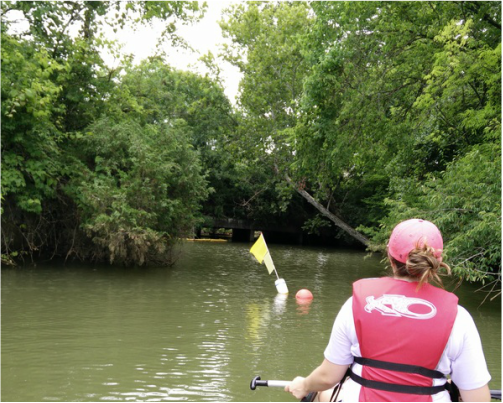Lotic-lentic transitions in aquatic systems
Many aquatic ecosystems defy simple categorization as flowing (lotic) or non-flowing (lentic). Changes in the relative water surface elevation between inflowing and receiving water bodies can result in oscillations between lentic and lotic conditions, with implications for the physical, chemical, and biological conditions of the system.
Fork et al. in prep.
Fork et al. in prep.
 A research buoy collects temperature and conductivity data at the Fourth Creek cove of the Ft. Loudon reservoir in Knoxville, TN. A research buoy collects temperature and conductivity data at the Fourth Creek cove of the Ft. Loudon reservoir in Knoxville, TN.
|
How do pulses of stormwater propagate through receiving reservoirs? Many streams, especially in populated areas, eventually flow into some kind of impoundment. This means that pulses of stormwater travel quickly through flashy urban streams and ultimately into a natural or man-made lake. How do these flashy, pulsed inputs of stormwater affect the environment of the lakes that receive them? In collaboration with Oak Ridge National Lab, and supported by a GO! Fellowship, I've been working to understand how pulses of stormwater affect the reservoirs into which they flow. Our study compared three arms of reservoirs in eastern Tennessee that span a range of development intensity and will examine the effects that storm pulses have on the physical structure and chemical environment of these reservoir coves. Fork et al. in review |
